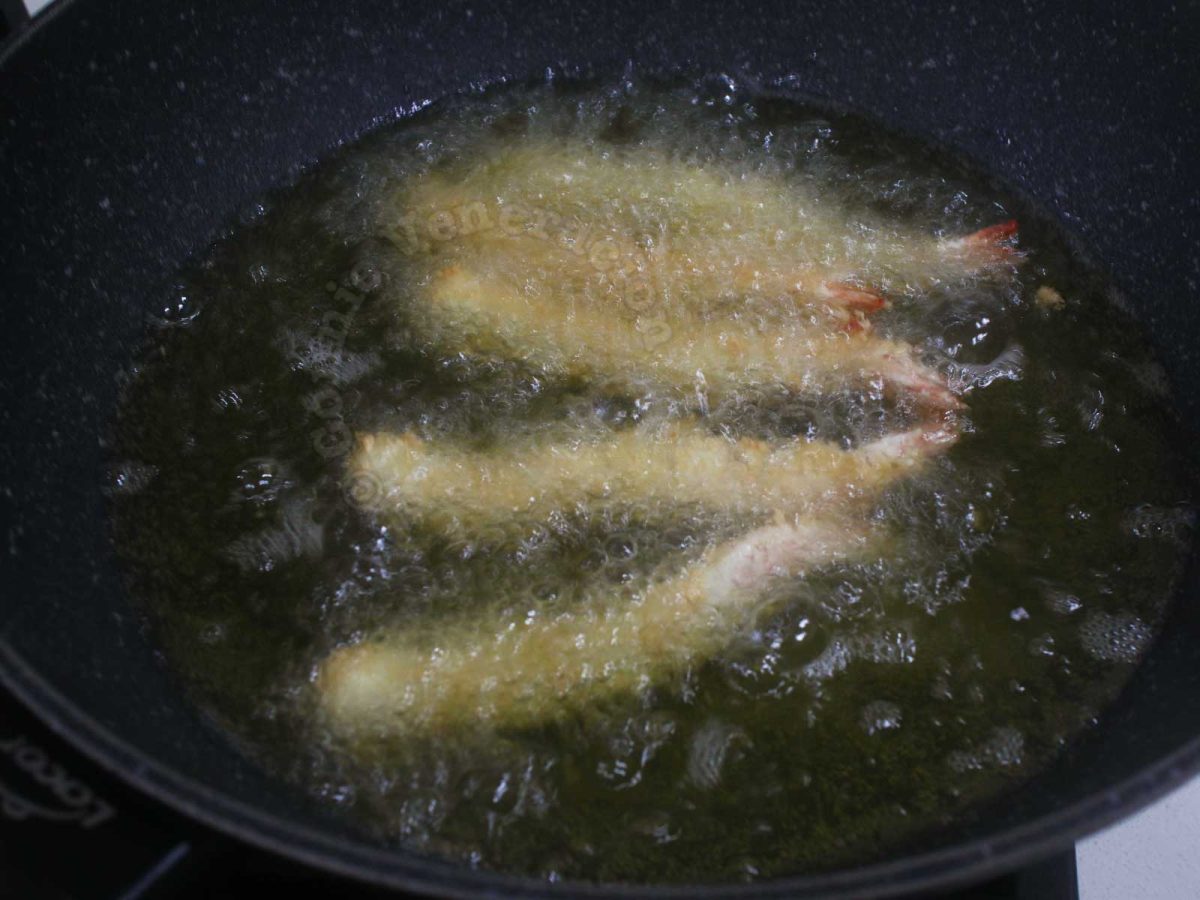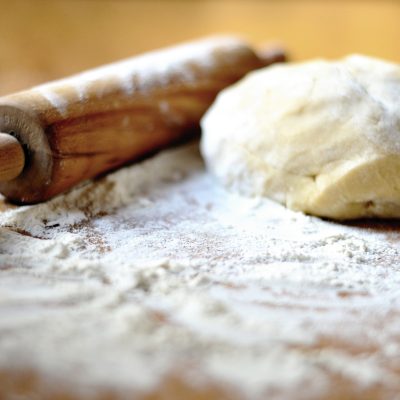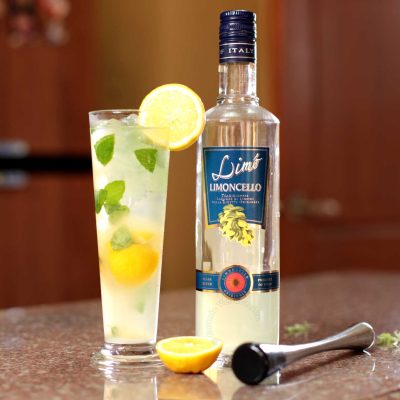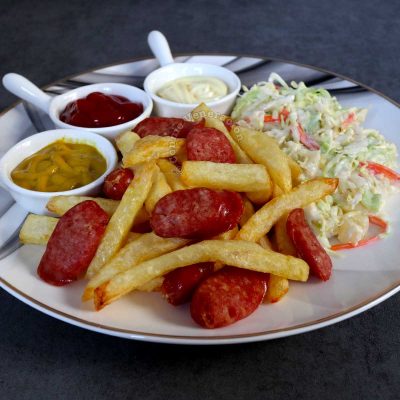Pan frying means cooking food in a hot pan with the bottom lightly coated with oil. Shallow frying means cooking food in oil with a depth that reaches about half of the thickness of the food with the food touching the bottom of the pan all throughout. Deep frying means cooking food in oil deep enough to cover it to allow the food to float in the oil.
What is it that makes the amount of oil significant?
Obviously, the amount of oil has nothing to do with the kind of food being cooking. Meat, for instance, can be pan fried (as in the case of bacon), shallow fried or deep fried. Same thing with seafood, dough, vegetables…
The significance lies in the result sought to be achieved. While getting the food cooked through is the ultimate result desired, the characteristics of the fried food is determined by the amount of oil used during the frying.
Pan frying
In pan frying, very little oil is used because the intention is merely sear the food and/or to add flavor (as when a little butter is melted in the pan when cooking pancakes) or to keep the food from sticking on the pan.
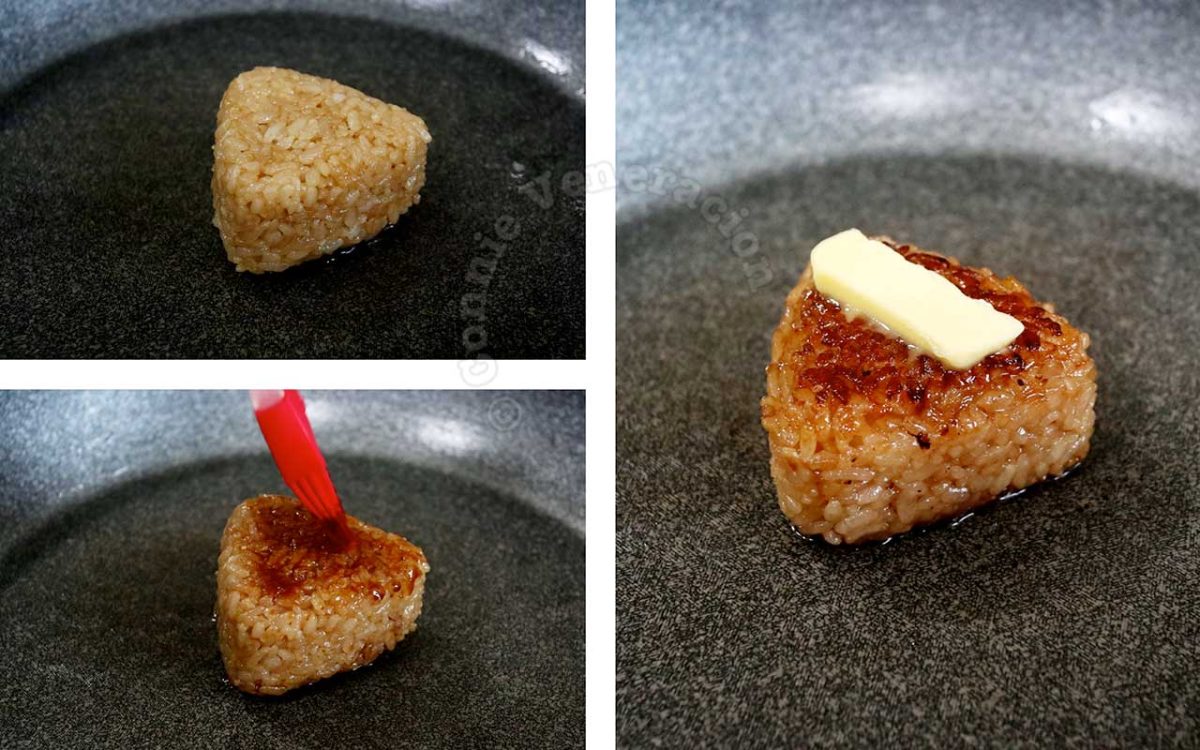
Generally, quick cooking food only requires pan frying. Eggs fried sunny side up, for example, does not require a lot of oil.
When fully cooked food needs to have texture on the surface, as is the case with yaki onigiri, it is pan fried as well.
Shallow frying
In shallow frying, creating a crisp and browned crust is often the desired result. Shallow frying requires more oil than pan frying. The oil touches the side of the food but the top is exposed.
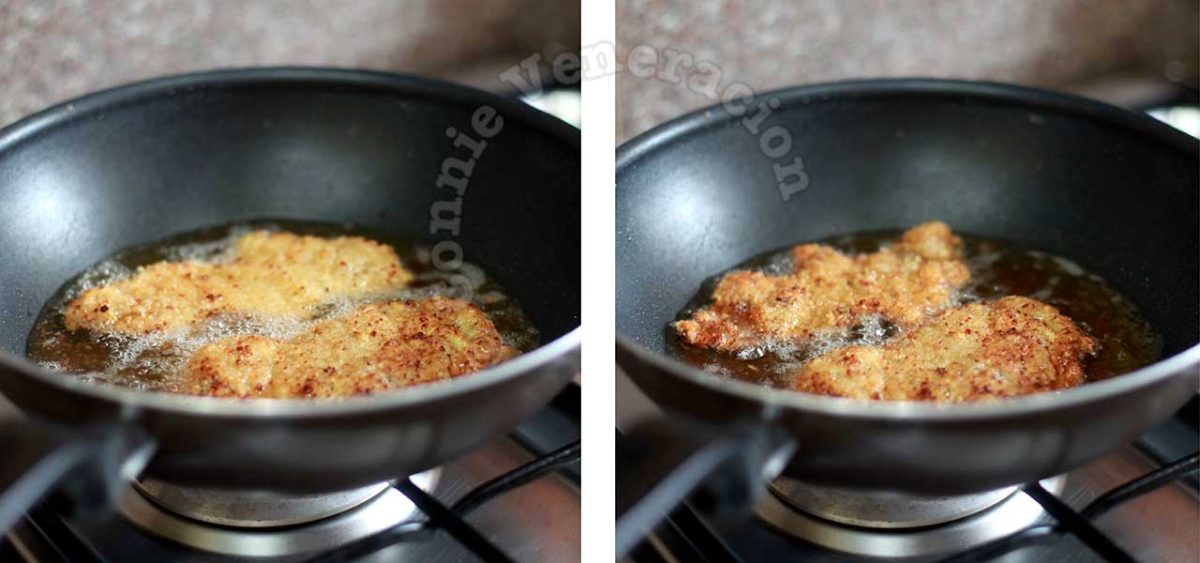
Because only the bottom half of the food touches the oil, in shallow frying, the food needs to be flipped over for even cooking.
To cite a few examples, chicken schnitzel is shallow fried. So are patties like mashed potato pancakes.
Deep frying
In deep frying, a crisp and browned crust and a thoroughly cooked but still moist interior is the goal. Deep frying means the food is fully submerged in hot oil.
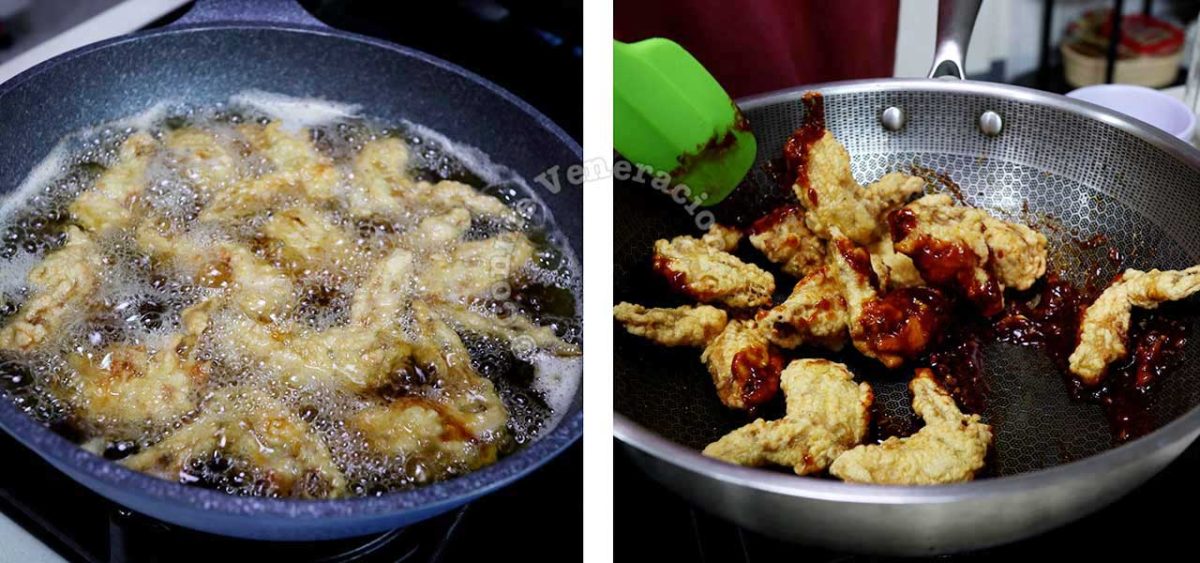
Fried chicken is deep fried. So are:
- fried spring rolls
- corn dogs
- empanadas
- French fries
- tempura and
- furai.
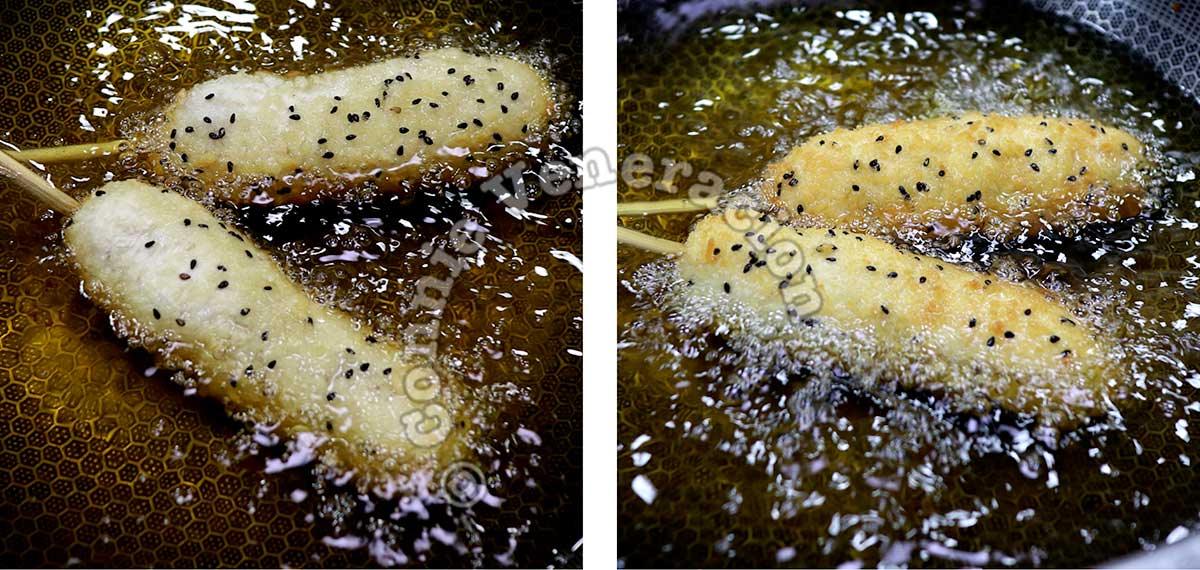
If you try to cook chicken wings in an inch of oil, or cook French fries in a lightly oiled pan, or if you shallow fry corn dogs, you’re looking at a kitchen disaster.
But if creating a crisp and browned crust is the result desired in shallow frying and deep frying, why not just deep fry and ensure even browning? Try deep frying mashed potato pancakes instead of shallow frying. See if the patties don’t crumble in the oil. In short, it is the recipe that dictates whether the food should be shallow fried or deep fried.
The relation between temperature and the amount of oil
Frying always requires a high cooking temperature which can be anywhere from 350F to 375F depending on the smoking point of the oil used.
Whether pan frying, shallow frying or deep frying, it is important for the oil to reach the required temperature before adding the food to the pan. That is what makes the difference between greasy and non-greasy fried food. And that brings me to the next obvious question.
Is deep fried food greasier than shallow-fried food?
No. NO — unless the oil wasn’t hot enough when the food was dropped in.
In deep frying, it is only the surface of the food that gets in contact with the oil. If the temperature of the oil is correct, and if the correct temperature is maintained throughout the frying process, the interior portion of the food cooks in steam generated by the heat of the oil.
What steam? All foods contain water in varying amounts. Subject water to heat and it turns into steam. When food is fried in oil that isn’t hot enough, that water leaks into the oil. The effect is boiling food in a mixture of water and oil. And that what makes fried food soggy and greasy. The food gets longer too cook (because of the low temperature) and it absorbs oil that it normally wouldn’t if the oil were hot enough.

